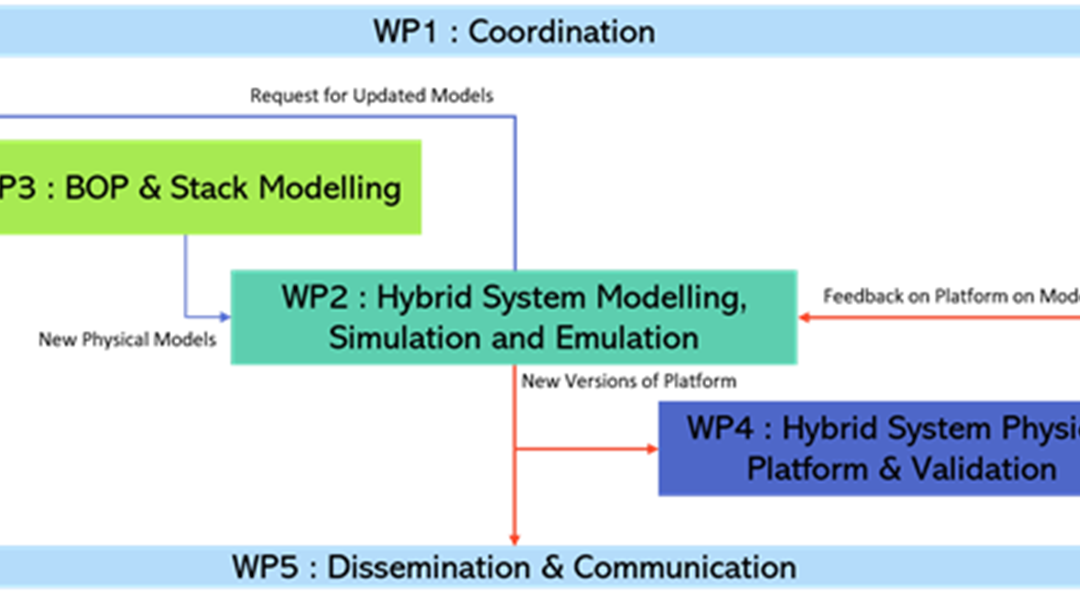Objectives
Fuel cells have promise in transport applications ranging from delivery drones via ocean going ships to large scale power production, all in which they are competing with well-established technologies. As a complicated and disruptive technology, fuel cells require specialised knowledge to integrate into devices and systems. This is a huge barrier to fuel cell deployment in general and more specifically its use in companies that don't have existing experience with, or confidence in fuel cell technologies. The fuel cells community needs to support newcomers and system integrators develop and optimise fuel cell battery hybrid systems for varied applications.

Overall objective: To make the design process of hybrid fuel cell and battery systems easier, cheaper and quicker
Fuel cell systems are inherently complicated, they are a mixture of interconnected sub‐systems that must precisely control gases, liquids, heat and electricity to keep the fuel cell stack running optimally. They are also usually hybridised with a battery subsystem with its own specialised operational and control requirements. The design and control of hybrid battery fuel cell systems is therefore very challenging for engineers used to working with batteries or combustion engines. The design and prototyping process is often prohibitively complex, risky, long and expensive, hampering and slowing the adoption of fuel cell technologies in many fields. The VIRTUAL‐FCS project will address all these challenges thereby accelerating the market introduction of the environmentally friendly fuel cell technology.
Sub-objective 1: Accurately predict the lifetime, reliability and performance of systems to reduce cost
Sub-objective 2: Allow for better hybridisation and control strategies for any fuel cell application.
Sub-objective 3: Enable software‐model‐hardware in the loop design of hybrid systems.
Sub-objective 4: Demonstrate and validate the approach with assistance of end users.
Sub-objective 5: Establish the ongoing development of the tool and its widespread adoption.

